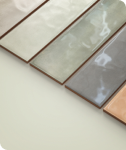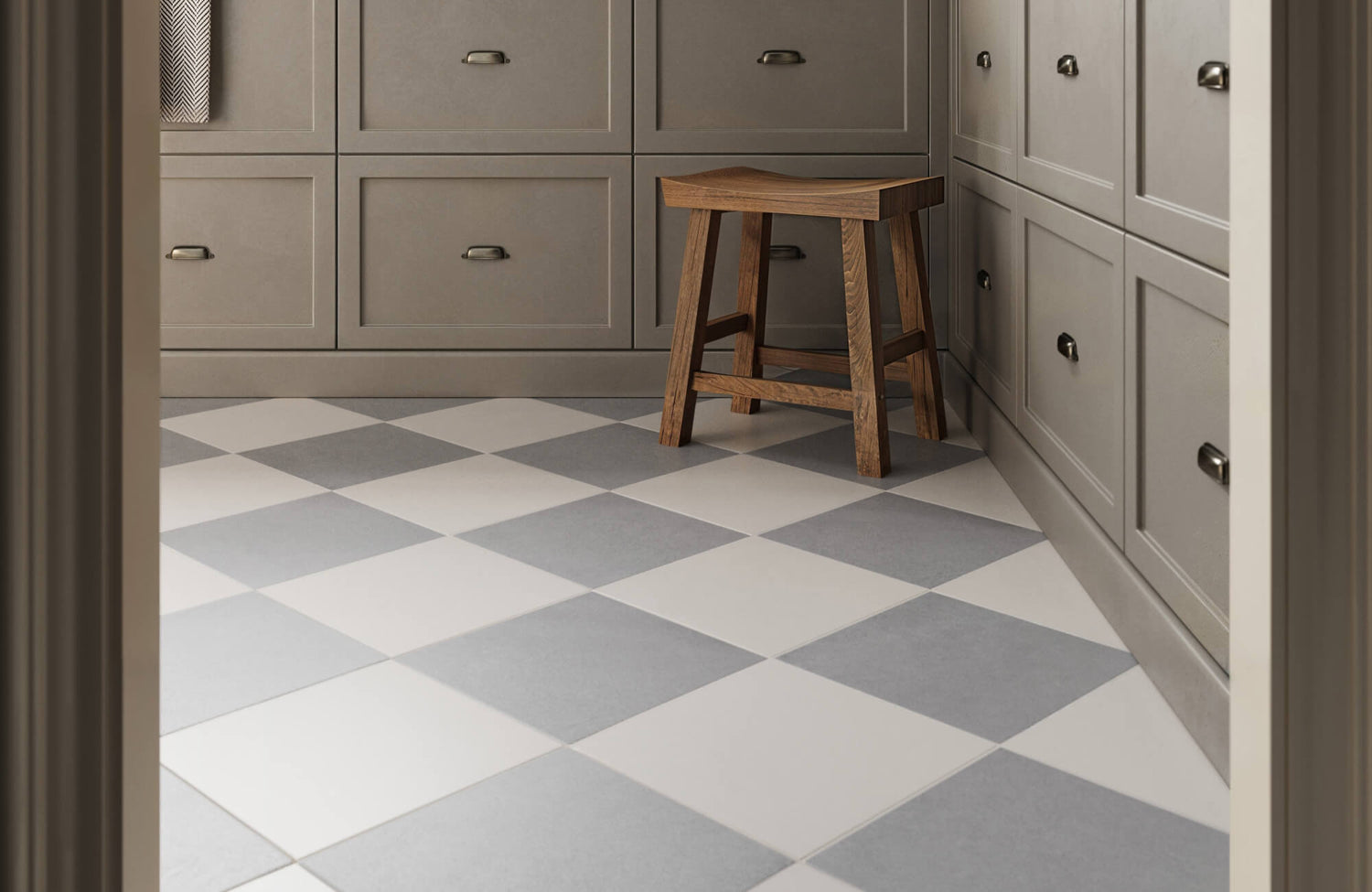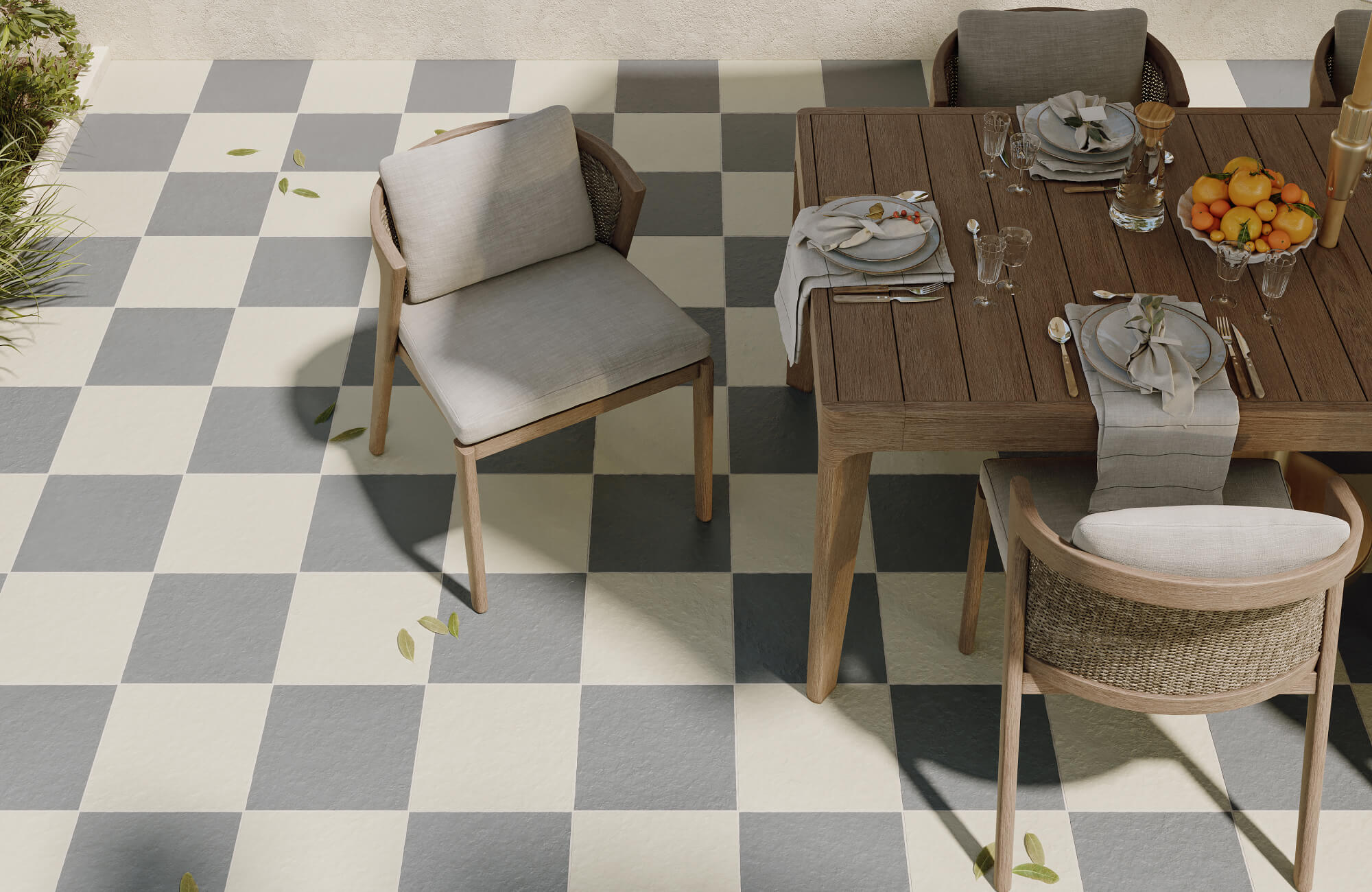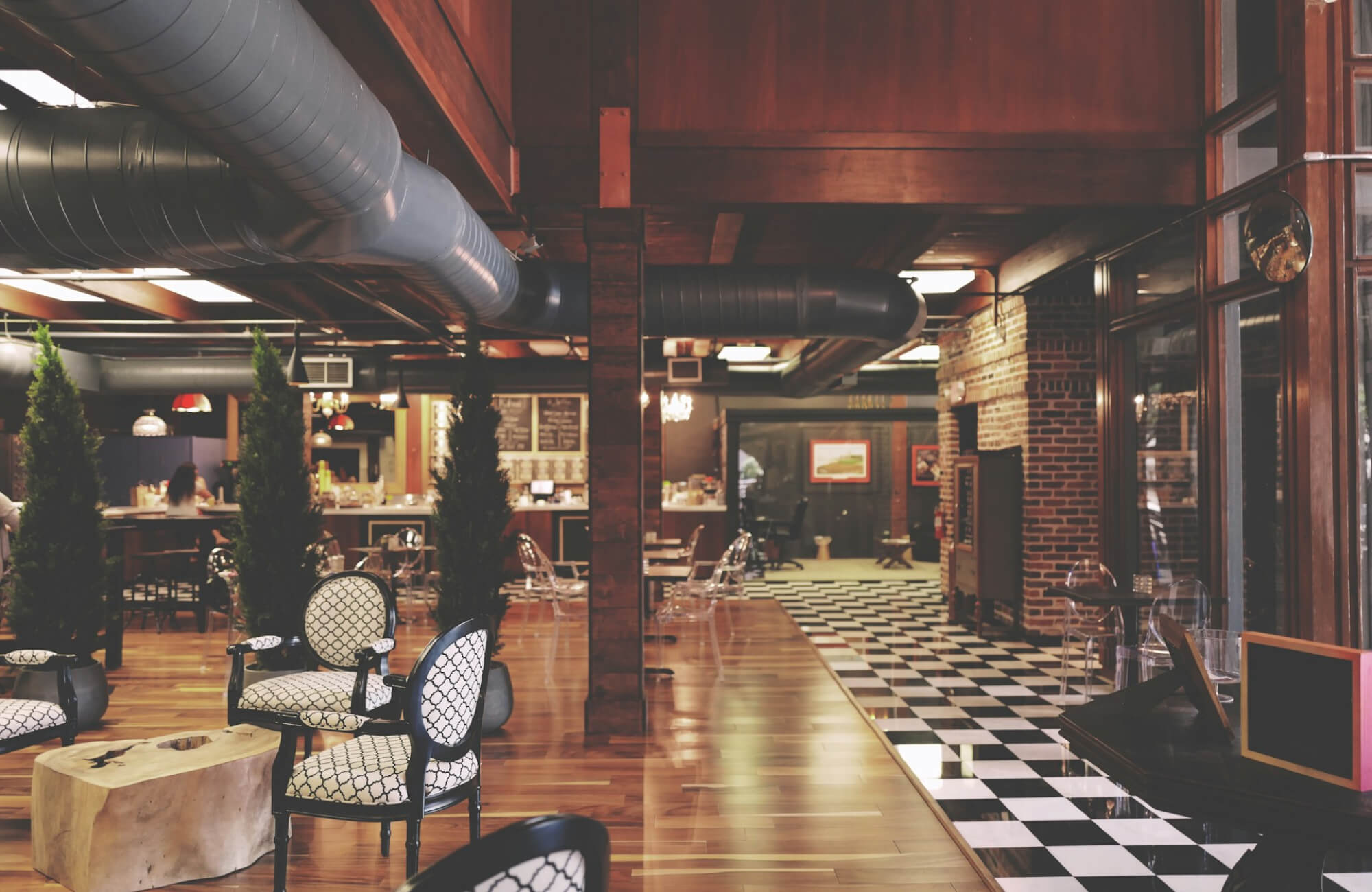The checkerboard pattern has remained a timeless design choice, transcending trends and consistently re-emerging in various forms, including paint, textiles, wallpaper, and tiles. Let’s explore the reasons behind the enduring appeal of this high-contrast design and how it can be seamlessly integrated into contemporary interiors.

Tracing the Origins of the Checkerboard Design
Checkerboard and related patterns like plaid and gingham have been part of home interiors for centuries. During the European Renaissance, checkerboard flooring became a mark of elegance, most notably seen in the marble floors of the Grand Trianon at the Palace of Versailles. By the 20th century, the design had made its way into American kitchens and bathrooms, often in the form of black-and-white ceramic or linoleum tiles. Though its popularity faded with the rise of solid tones and hardwood flooring, checkerboard is now enjoying a strong return in modern spaces.
Checkerboard’s renewed popularity shows how fashion and design trends often move together. Gen Z’s embrace of late ’90s and early 2000s fashion has brought back this iconic pattern, once tied to skate culture and bold, graphic accessories. Now, it’s being reimagined in vibrant palettes and wavy distortions that give it a fresh, playful twist.
What keeps checkerboard relevant is its balance of simplicity and history. It brings a nostalgic feel that resonates during uncertain times, offering a sense of familiarity and comfort. Compared to quieter patterns like plaids or stripes, checkerboard makes a stronger visual statement. It adds personality and charm without feeling overly complicated, making it a great way to bring timeless design into a contemporary home.

Exploring the Versatility of Checkerboard Tiles
Checkerboard tiles bring a timeless, structured aesthetic to interiors while offering more flexibility than you might expect. Their graphic appeal and adaptable layout make them a go-to for everything from kitchens and bathrooms to mudrooms and patios. Whether you're aiming for a clean and modern look or something more playful and nostalgic, checkerboard tiles can bring texture, movement, and character into any space.
Where Checkerboard Tiles Work Best
Checkerboard tiles aren’t just for statement floors; they work beautifully in everyday areas, too. For example, pantries and laundry rooms get a design upgrade with this classic layout, while a checkerboard entryway can set a stylish tone the moment you walk in. Outdoor spaces also benefit from their balanced contrast, especially when done in textured, matte finishes like terrazzo-look porcelain.
In kitchens, lighter checkerboard variations like soft gray and white can refresh backsplashes without requiring a full remodel. Smaller square tiles bring charm and a handcrafted feel, making these layouts just as effective for compact spaces. The beauty of checkerboard tiles is that they add structure and personality without overpowering the rest of your design.
Affordable Elegance in Every Room
One reason checkerboard tiles remain so popular is their ability to offer high-end looks at an accessible price. Porcelain and ceramic tiles can mimic materials like marble or granite, giving you the visual impact without the upkeep or cost. For example, Edward Martin's Leona 24x24 Checkerboard Matte Porcelain Tile in Calacatta and Nero Marquina above captures the classic richness of stone while being practical and durable enough for busy households.
You can also get a feel for how these tiles might look in your own home by using our augmented reality (AR) tool, which helps you visualize layouts and finishes in real time. And if you need help refining your ideas, our design services are available to guide you through personalized combinations, layout suggestions, and material recommendations that bring your space together beautifully.

Checkerboard in Painted Floors and Soft Furnishings
Checkerboard painted floors are celebrated for their versatility and charm, effortlessly enhancing both compact spaces and expansive areas. This pattern is renowned for its ability to visually enlarge a room while adding a touch of casual, beachy elegance. Painted check flooring is also frequently featured in settings from cozy children's rooms to bustling family rooms and kitchens. The advantage of painting over tiles is the limitless color choices available, allowing for customized scaling and a warm, inviting feel that encourages walking barefoot, a stark contrast to the colder, harder surface of tiles.
Beyond the realm of flooring, the checkerboard pattern is increasingly making its mark in the world of soft furnishings. While checkerboard flooring remains a classic, the pattern's application has expanded to include curtains, upholstered furniture, rugs, towels, and bed linens. The initial trend of plush checkerboard rugs has evolved, serving as a stylistic nod to the iconic checkerboard floor without the commitment required for tile installation.
Expanding further, designers are now creatively applying checkerboard patterns to accent pieces in living rooms and bedrooms. For instance, a checkerboard upholstered accent chair can transform a space, offering a striking visual element. The pattern's flexibility is showcased in its adaptation to various decor styles—from a neutral, deconstructed check suitable for modern or minimalist settings to a bolder, more eclectic checkerboard collage that enlivens whimsical spaces. This approach not only highlights the checkerboard’s adaptability but also its capacity to inject playful charm and sophisticated whimsy into home interiors, making it a dynamic choice for those looking to infuse personality into their living spaces.

Mixing and Matching Checkerboard with Other Patterns
Integrating checkerboard with other simple prints, such as bold statement stripes, can dramatically alter the dynamics of a room, crafting a visually engaging color-blocked effect. This technique isn't just effective for bedding; it extends to other decor elements like throws, pillows, and even curtains, significantly elevating the design quotient of any space.
The potential for creativity in combining patterns is vast. For instance, pairing an oversized checkerboard print with bold, colorful stripes can introduce an element of modernity and energy. Alternatively, blending traditional checkerboard with retro floral checks adds a layer of complexity and vintage charm. This checks-on-checks approach is particularly striking, bringing a vibrant and eclectic energy to bedding sets and extending seamlessly to other soft furnishings. The ability to mix and match these patterns allows for a personalized and curated aesthetic that can transform a space from simple to stunning with just a few thoughtful additions.
Embracing Color with Checkerboard Patterns
Checkerboard prints have long been known for their bold, two-tone appeal, but adding color to this classic layout can completely shift the feel of a space. Whether you're aiming for something playful or polished, a splash of vibrant color can give the pattern new life while still honoring its timeless roots. It's a smart way to bring energy into a room without making it feel chaotic or overdone.
Because checkerboard is built on simple geometry, it naturally lends itself to creative color play. Moving beyond black and white, options like forest green, navy blue, or even soft pastels offer a fresh and inviting take on the traditional grid. These colorful variations can easily complement different design styles from clean and modern to bold and eclectic. Whether used in a full floor or smaller accents, they help inject personality and charm into neutral spaces, making them feel more dynamic without losing their balance.

Frequently Asked Questions (FAQs)
Still have questions? Whether you're a design enthusiast or planning your next home upgrade, here are a few common questions we often hear about integrating checkerboard patterns into your space.
1. Is checkerboard flooring hard to maintain?
Not at all. Maintenance depends on the material rather than the pattern. For example, ceramic and porcelain checkerboard tiles are highly durable and easy to clean, while painted floors may require occasional touch-ups, especially in busy areas.
2. Can a checkerboard work in small rooms?
Yes! In fact, checkerboard patterns can make compact spaces feel larger. The contrast creates visual depth and dimension, especially when applied diagonally, drawing the eye across the room.
3. What are the best color combinations besides black and white?
While classic black and white is timeless, modern alternatives include sage and cream, navy and ivory, or even soft pastels like blush and mint. The choice depends on your desired mood and existing decor. For a warm, earthy take on the trend, consider our Brody 24x24 Checkerboard Matte Porcelain Tile in Sand and Smoke, seen above, which blends soft taupe and gray tones to create a subtle yet sophisticated checkerboard effect that complements both rustic and contemporary interiors.
4. How can I experiment with a checkerboard if I’m not ready to commit to tiles or paint?
Start small. Incorporate the pattern through rugs, cushions, or decorative accessories. These low-commitment items let you test the look and feel of the checkerboard without permanent changes.








